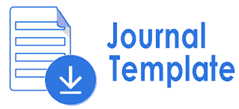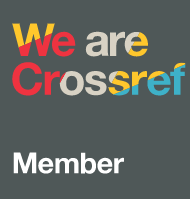The effectivenes of blended learning model integrated independent learning on critical thinking
Abstract
The goals and outputs of higher education education are to make students proficient in problem solving, creative, innovative and critical thinking. However, in reality students' critical thinking skills are still low. Therefore the aim of this research is: 1). Reveal the effectiveness of the blended learning model on students' critical thinking skills; 2). Knowing the interaction between blended learning models and learning independence in influencing critical thinking skills. Therefore, the design of this study is a mixed factorial between and within groups (Between Group-Within Group). 42 semester V students of IAIN Kerinci were sampled in this study. Critical thinking skills tests and questionnaires were used in this study which were analyzed quantitatively. The results showed that the blended learning model was effective in influencing students' critical thinking skills with an average score of 72.3 while the control class's critical thinking skills had an average score of 60.45. In addition, based on the test between subjects effect model, a significance of 0.003 was obtained, Sig <0.05, meaning that there were differences in critical thinking skills between students using blended learning models and using conventional models. In addition, there is a significant interaction effect between independence and students' critical thinking skills.
Keywords
Full Text:
PDFReferences
Abroto, A., M., & Ayu,N. P. (2021). Pengaruh Metode Blended Learning dalam Meningkatkan Motivasi dan Hasil Belajar Siswa Sekola Dasar. Edukatif: Jurnal Ilmu Pendidikan 3(5), 1993-2000.
Akinoğlu, O., & Karsantik, Y. (2016). Pre-service teachers’ opinions on teaching thinking skills. International Journal of Instruction, 9(2), 61–76.
Alsalhi, N. R., Eltahir, M. E., & Al-Qatawneh, S. S. (2019). The effect of blended learning on the achievement of ninth grade students in science and their attitudes towards its use. Heliyon, 5(9), e02424.
Ananda, S. R., Murni, A., & Maimunah. (2022). Pengembangan Perangkat Pembelajaran Berbasis Masalah Open-Ended untuk Menfasilitasi Kemampuan Berpikir Kritis Siswa. Aksioma, 11(1), 342–354.
Arifin, M. (2020). The Effect of Blended Learning Model with Moodle on the Students’ Writing Achievement. IJEMS:Indonesian Journal of Education and Mathematical Science, 1(2), 19.
Aritonang, I., & Safitri, I. (2021). Pengaruh Model Blended Learning terhadap Peningkatan Literasi Matematika Siswa. Jurnal Cendekia; Jurnal Pendidikan Matematika, 05(01), 735-743
As’ari, A. R., Mahmudi, A., & Nuerlaelah, E. (2017). Our Prospective Mathematic Teachers Are Not. Journal on Mathematics Education, 8(2), 145–156.
Aslamiyah, T. Al, Setyosai, P., & Praherdhiono, H. (2019). Blended Learning dan Kemandirian Belajar Mahasiswa Teknologi Pendidian. Jurnal Kajian Teknologi Pendidikan, 2(2), 109–114.
Aulia, R., Rohati, R., & Marlina, M. (2021). Students’ Self-Confidence and Their Mathematical Communication Skills in Solving Problems. Edumatika : Jurnal Riset Pendidikan Matematika, 4(2), 90–103.
Basri, H., Purwanto, P., Asari, A. R., & Sisworo, S. (2019). Investigating Critical Thinking Skill of Junior High School in Solving Mathematical Problem. 12(3), 745–758.
Delima, N., & Cahyawati, D. (2021). Students’ Mathematics Self-Concept, Mathematics Anxiety and Mathematics Self-Regulated Learning during the Covid-19 Pandemic. Jurnal Pendidikan Matematika, 15(2), 103–114.
Dick, W., & Carey, L. (2015). Systematic Design of Instruction, The 8th Edition (The 8Th Ed). Pearson. New York.
Eyyam, R., Languages, F., & Mediterranean, E. (2014). Impact Of Use Of technology in Mathematics lessons on Student Achievement and Attitudes. Social Behavior and Personality, 42(2005).
Firdaus, Kailani, I., Bakar, M. N. Bin, & Bakry. (2015). Developing Critical Thinking Skills of Students in Mathematics Learning. Journal of Education and Learning, 9(3), 226–236.
Fitriasari, P., Tanzimah, & Sari, N. (2018). Kemandirian belajar mahasiswa melalui blended learning pada mata kuliah metode numerik [Students’ self-regulated learning through blended learning in numerical methods course]. Jurnal Elemen, 4(1), 1–8.
Gravemeijer, K., Stephan, M., Julie, C., Lin, F. L., & Ohtani, M. (2017). What Mathematics Education May Prepare Students for the Society of the Future? International Journal of Science and Mathematics Education, 15, 105–123.
Halpern, D. (2014). Thought and Knowledge: An Introduction to Critical Thinking (4th ed). Psychology Press. New York
Hidayah, Y., Trihastuti, M., & Widodo, B. (2021). Online Learning Model in Improving Civic Responsibility as a Solution during Covid-19 Pandemic in Indonesia. Tadris: Jurnal Keguruan Dan Ilmu Tarbiyah, 6(1), 195–206.
Joyce, B., Weil, M., & Calhoun, E. (2015). Models of Teaching. In Paper Knowledge . Toward a Media History of Documents (Ninth Edit). Pearson Education, Inc. New York
Kurniati, D., Purwanto, P., As’ari, A. R., & Sa’dijah, C. (2020). Changes of the Students’ Truth-Seeking Behaviour during the Infusion Mathematics Learning. TEM Journal, 9(4), 1711–1720.
Kurniati, D., Trapsilasiwi, D., Rahman As’ari, A., Basri, H., & Osman, S. (2022). Prospective Mathematics Teachers’ Critical Thinking Disposition in Designing Cognitive and Psychomotor Assessment Instruments. Jurnal Keguruan Dan Ilmu Tarbiyah, 7(1), 1–14.
Loes, C. N., & Pascarella, E. T. (2017). Collaborative Learning and Critical Thinking: Testing the Link. Journal of Higher Education, 88(5), 726–753.
Masfingatin, T., Murtafiah, W., & Maharani, S. (2020). Exploration of Creative Mathematical Reasoning in Solving Geometric Problems. Jurnal Pendidikan Matematika, 14(2), 155–168. https://doi.org/10.22342/jpm.14.2.7654.155-168
Muncarno & Nelly Astuti. (2021). Pengaruh Model Blended Learning terhadap Kemampuan Berpikir kritis Matematika Peserta Didik Sekolah Dasar. Aksioma, 10(4), 2784-2790.
Mutawah, M. A. Al, Thomas, R., & Khine, M. S. (2021). Investigation into Self-regulation, Engagement in Learning Mathematics and Science and Achievement among Bahrain Secondary School Students. International Electronic Journal of Mathematics Education, 12(3), 633–653.
Rahmawati, M., Kurniati, D., Trapsilasiwi, D., & Osman, S. (2021). The Students’ Truth-Seeking Behaviour in Solving the Problems With No Specified Universal Set Based on IDEAL Problem Solving. Kreano, Jurnal Matematika Kreatif -Inovatif, 12(2), 302–311.
Rusdi, M. (2020). Penelitian Perlakuan Pendidikan (Educational Treatment-Based Research). Perpaduan Penelitian Desain, Penelitian Tindakan dan Penelitian Eksperimen dalam Permasalahan Kependidikan. PT Remaja Rosdakarya. Depok
Sanders, S. (2016). Journal of Student Engagement: Education Matters. University of Wollongong, 6(1), 19–27.
Su, H. F. H., Ricci, F. A., & Mnatsakanian, M. (2016). Mathematical teaching strategies: Pathways to critical thinking and metacognition. International Journal of Research in Education and Science, 2(1), 190–200. https://doi.org/10.21890/ijres.57796
Suhendri, H. (2015). Pengaruh Metode Pembelajaran Problem Solving terhadap Hasil Belajar Matematika Ditinjau dari Kemandirian Belajar. Formatif: Jurnal Ilmiah Pendidikan MIPA, 3(2), 105–114.
Sulistyani, N., & Retnawati, H. (2015). Pengembangan perangkat pembelajaran bangun ruang di SMP dengan pendekatan problem-based learning. Jurnal Riset Pendidikan Matematika, 2(2), 197–210.
Sutisna, A. (2016). Pengembangan Model Pembelajaran Blended Learning pada Pendidikan Kesetaraan Program Paket C dalam Meningkatkan Kemandirian Belajar. JTP - Jurnal Teknologi Pendidikan, 18(3), 156–168.
Tobing, H. E. L., Somakin, & Susanti, E. (2022). Development of E-Module Based on HOTS Questions on Distance Material for High School Students. Jurnal Pendidikan Matematika, 16(1), 1–14.
Wolters, C. A., & Hussain, M. (2015). Investigating grit and its relations with college students’ self-regulated learning and academic achievement. Metacognition and Learning, 10 (3), 293–311.
DOI: https://doi.org/10.33373/chypend.v9i1.5267
Refbacks
- There are currently no refbacks.

This work is licensed under a Creative Commons Attribution-NonCommercial-ShareAlike 4.0 International License.
Copyright (c) 2018 Universitas Riau Kepulauan

Ciptaan disebarluaskan di bawah Lisensi Creative Commons Atribusi 4.0 Internasional.















